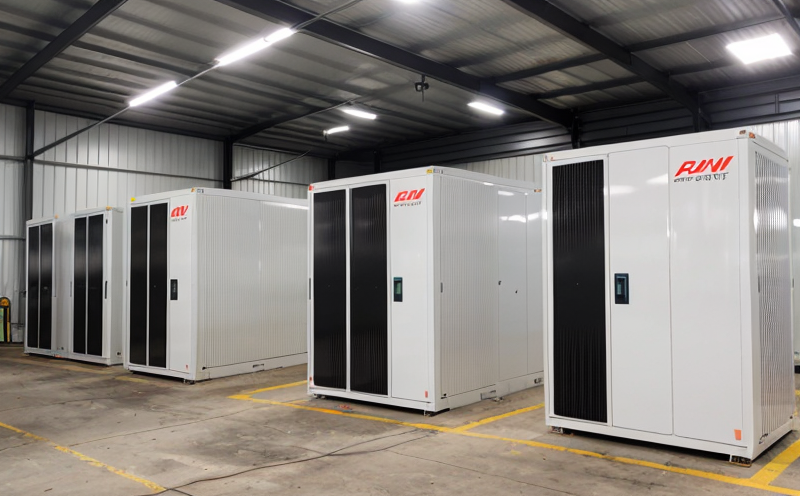ASTM D3330 Adhesion Testing for Battery Materials
The ASTM D3330 adhesion test is a critical procedure used in the evaluation of the bond between two materials, particularly relevant to battery materials and their interfaces. This service ensures that the integrity of the bonding layer within batteries can withstand the mechanical stresses and environmental conditions encountered during operation.
In the context of renewable energy testing, especially for electric vehicles (EVs) and stationary storage systems, adhesion is a crucial factor in determining the overall reliability and durability of battery components. The ASTM D3330 test method provides a standardized approach to measure this adhesion strength, ensuring that the materials used in batteries are compatible with each other.
The test involves adhering a layer of one material onto another and then subjecting it to specific conditions designed to simulate real-world scenarios. This can include thermal cycling, immersion tests, or exposure to corrosive environments. By conducting ASTM D3330 adhesion testing, manufacturers and quality assurance teams can ensure that their battery materials will perform reliably under various operational conditions.
The process typically begins with selecting the appropriate specimen size and configuration based on the material being tested. The substrate must be prepared according to the test specifications, which may involve cleaning or roughening surfaces to enhance adhesion. Once prepared, the adhesive layer is applied using a specified technique, ensuring that the bond between the two materials meets industry standards.
After bonding, the specimen undergoes conditioning and testing as per ASTM D3330 requirements. This can include curing at specific temperatures or humidity levels, followed by adhesion strength measurement through peel tests or other appropriate methods. The results provide insights into the long-term performance of the bonded interface, helping to identify potential areas for improvement in material selection or bonding techniques.
The ASTM D3330 test is not only important for battery manufacturers but also for suppliers and researchers working on advancements in renewable energy storage technologies. By ensuring that adhesion between materials meets stringent standards, this service contributes significantly to the development of more efficient and durable battery systems.
Why It Matters
The importance of ASTM D3330 adhesion testing cannot be overstated in the realm of energy storage. As renewable energy technologies evolve, so too must their components withstand rigorous operational conditions. Battery materials, especially those used in electric vehicles and large-scale energy storage systems, must remain bonded securely under various environmental stresses.
- Enhanced Reliability: Ensures that the bonding between different layers of a battery remains intact during operation.
- Improved Durability: Helps identify materials that can withstand harsh conditions without failure.
- Cost Efficiency: By preventing premature failures, this test reduces maintenance costs and extends product lifespan.
In the context of renewable energy, where storage solutions are critical for grid stability and EV adoption, reliable battery materials are paramount. ASTM D3330 testing ensures that these components meet the necessary standards, thereby supporting the broader goals of sustainable energy production and consumption.
Benefits
- Increased Safety: Ensures that there is no risk of materials separating or failing under operational conditions.
- Enhanced Performance: Promotes the use of high-quality, reliable bonding agents and substrates for optimal performance.
- Informed Decision-Making: Provides valuable data to guide material selection and process optimization.
The ASTM D3330 adhesion test is essential for ensuring that batteries perform consistently across various environments. By addressing potential weaknesses early in the development process, this service helps manufacturers produce safer, more efficient energy storage solutions.
International Acceptance and Recognition
The ASTM D3330 adhesion test is widely recognized and accepted globally for its reliability and accuracy. This standard has been adopted by numerous organizations involved in the manufacturing and testing of battery materials, ensuring uniformity across different regions.
In countries adhering to ISO standards, such as ISO 16922, ASTM D3330 complements these guidelines by providing a specific method for adhesion testing. Similarly, EN (European Norm) and IEC (International Electrotechnical Commission) recognize the importance of this test in validating battery performance.
Adherence to ASTM D3330 ensures that manufacturers comply with international quality assurance protocols, thereby enhancing their credibility in both domestic and export markets. This recognition also facilitates smoother interactions with regulatory bodies and industry partners worldwide.





